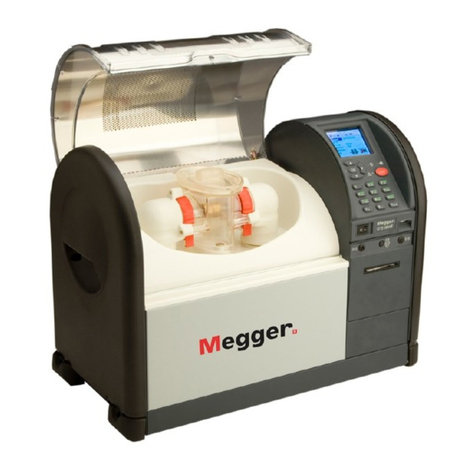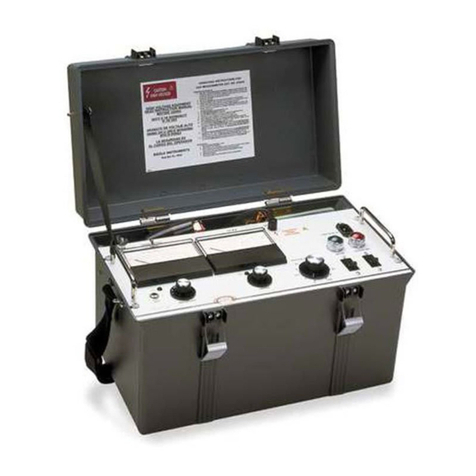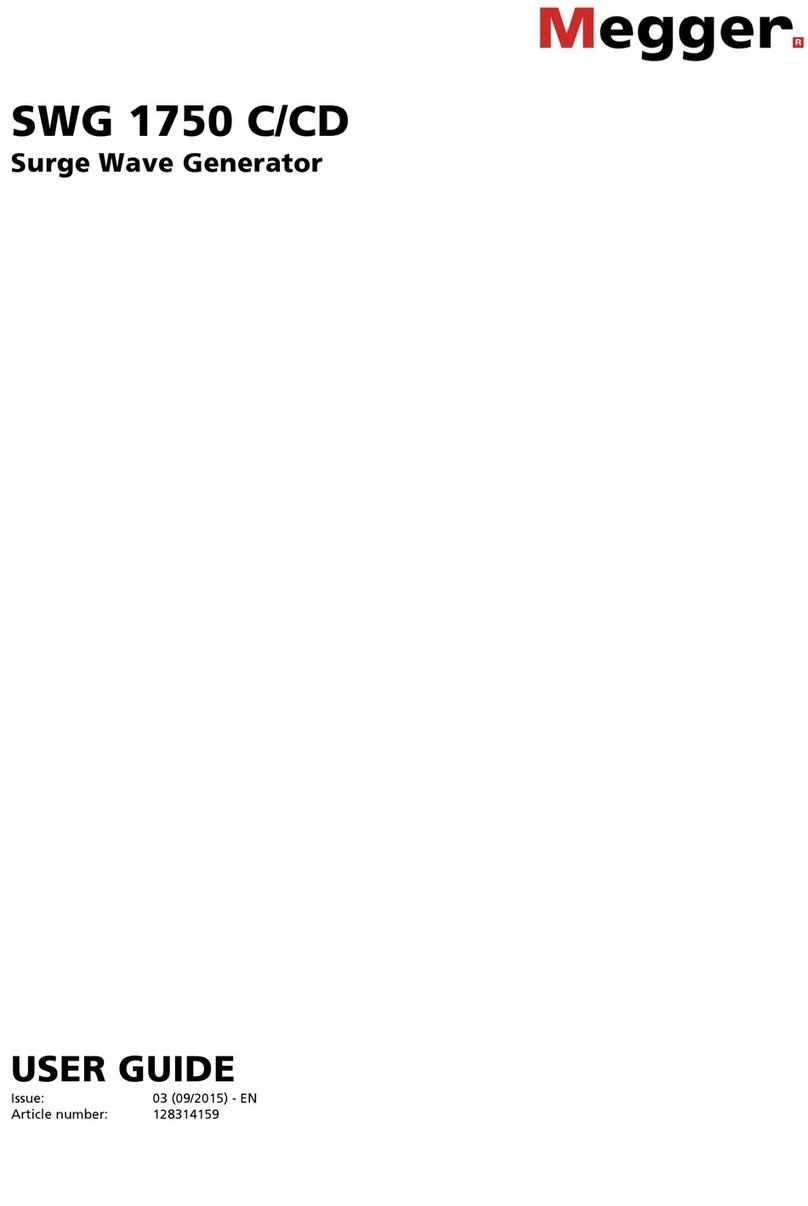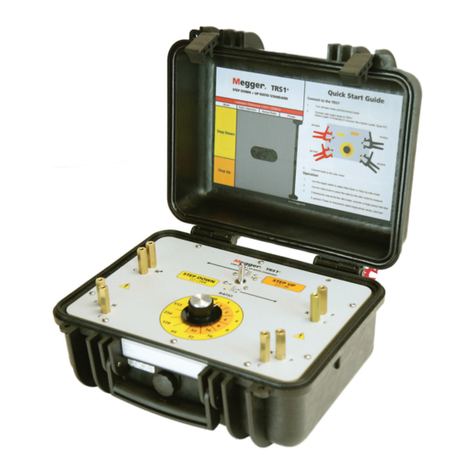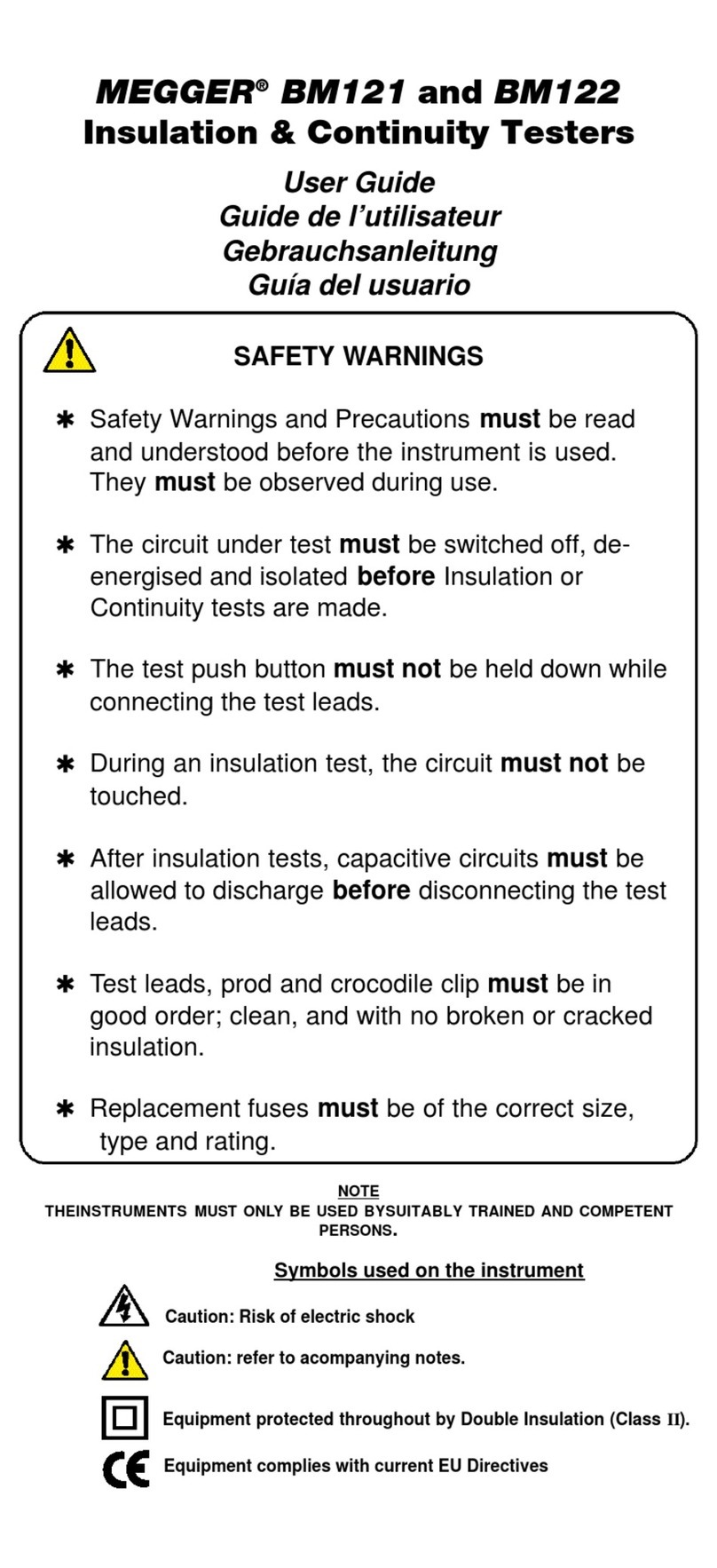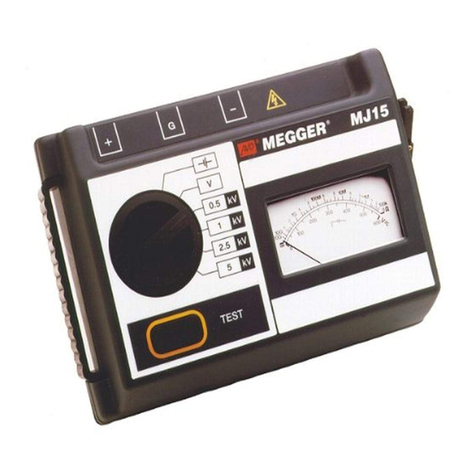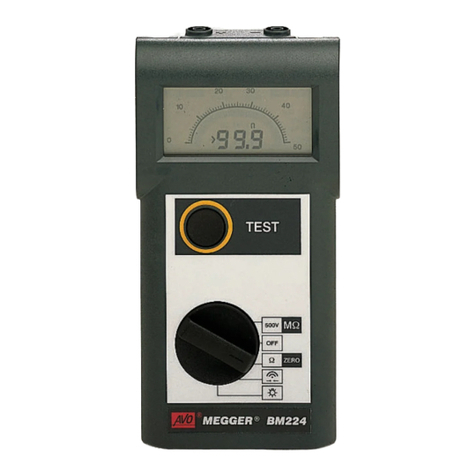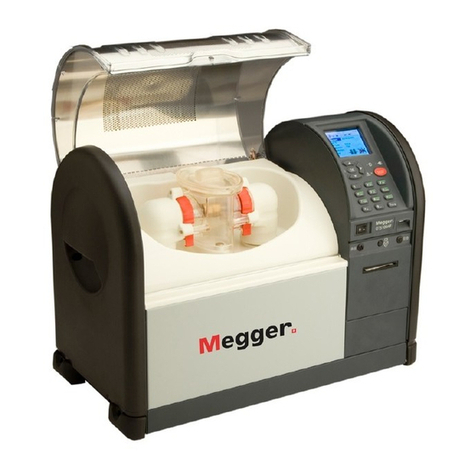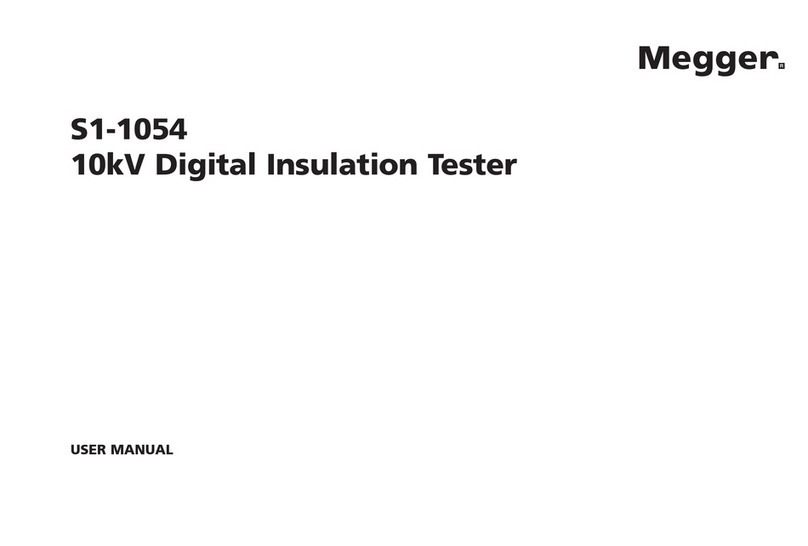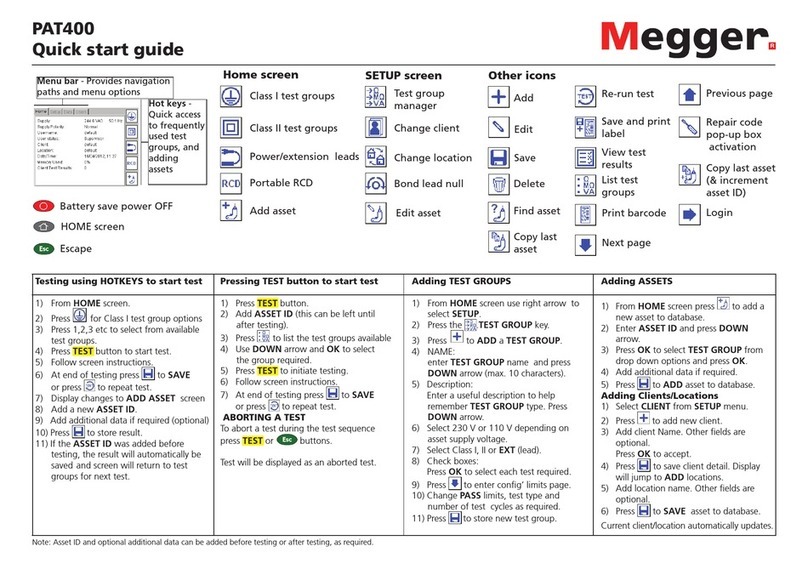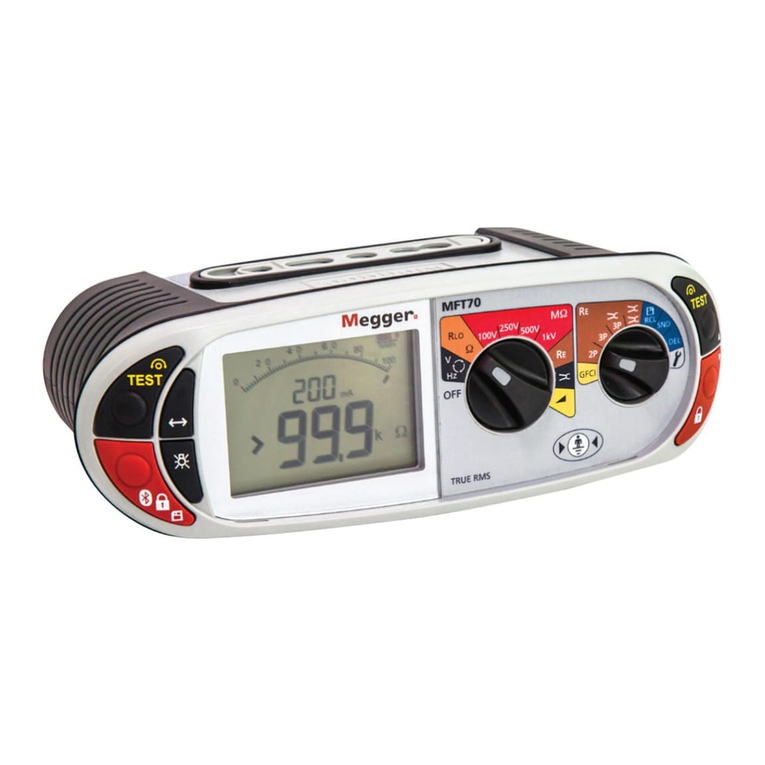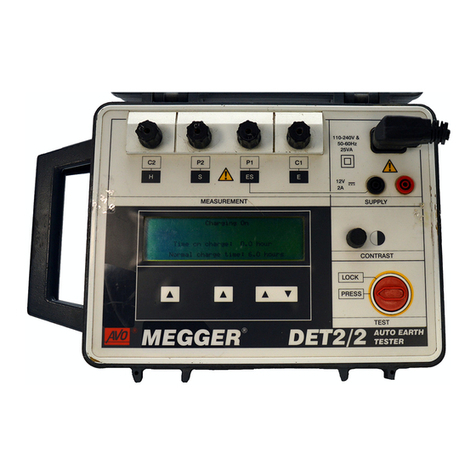
Contents
5
Contents
Consultation with Megger...............................................................................................3
Terms of Warranty ...........................................................................................................4
Contents ...........................................................................................................................5
1Safety Instructions ...........................................................................................7
General Notes ....................................................................................................7
General Safety Instructions and Warnings.........................................................8
2Technical Description ....................................................................................10
System Description ..........................................................................................10
Technical Data .................................................................................................11
Load Diagram ...................................................................................................12
Scope of Delivery and Accessories..................................................................13
Display and Controls ........................................................................................15
Connection Elements .......................................................................................16
3Commissioning ..............................................................................................17
Electrical Connection........................................................................................17
3.1.1 Normal Connection...........................................................................................18
3.1.2 Using the "HVCC VLF SIN-62" connection set for automatic leakage current
correction..........................................................................................................20
3.1.3 Connection to an External Diagnosis Module ..................................................20
3.1.4 Connection via separate cable drum................................................................21
3.1.5 Use of an External Safety Device (Optional)....................................................22
Switching On ....................................................................................................23
4Operation ........................................................................................................24
Safety Circuit ....................................................................................................24
General Operation............................................................................................25
System Menu ...................................................................................................28
5Operating Modes ............................................................................................29
Cable Testing ...................................................................................................29
Sheath Test and Sheath Fault Pinpointing.......................................................33
5.2.1 Sheath Test ......................................................................................................35
5.2.2 Sheath Fault Pinpointing ..................................................................................36
VLF TanDelta Loss Factor Measurement (Optional) .......................................37
5.3.1 Preparing for Measurement..............................................................................37
5.3.2 Course of the Measurement.............................................................................40
5.3.3 Evaluation of the Test Results .........................................................................42
5.3.3.1 Automatic Evaluation........................................................................................42
5.3.3.2 Manual Evaluation............................................................................................43
TanDelta Diagnosis in Combination with the External Test Attachment..........45


